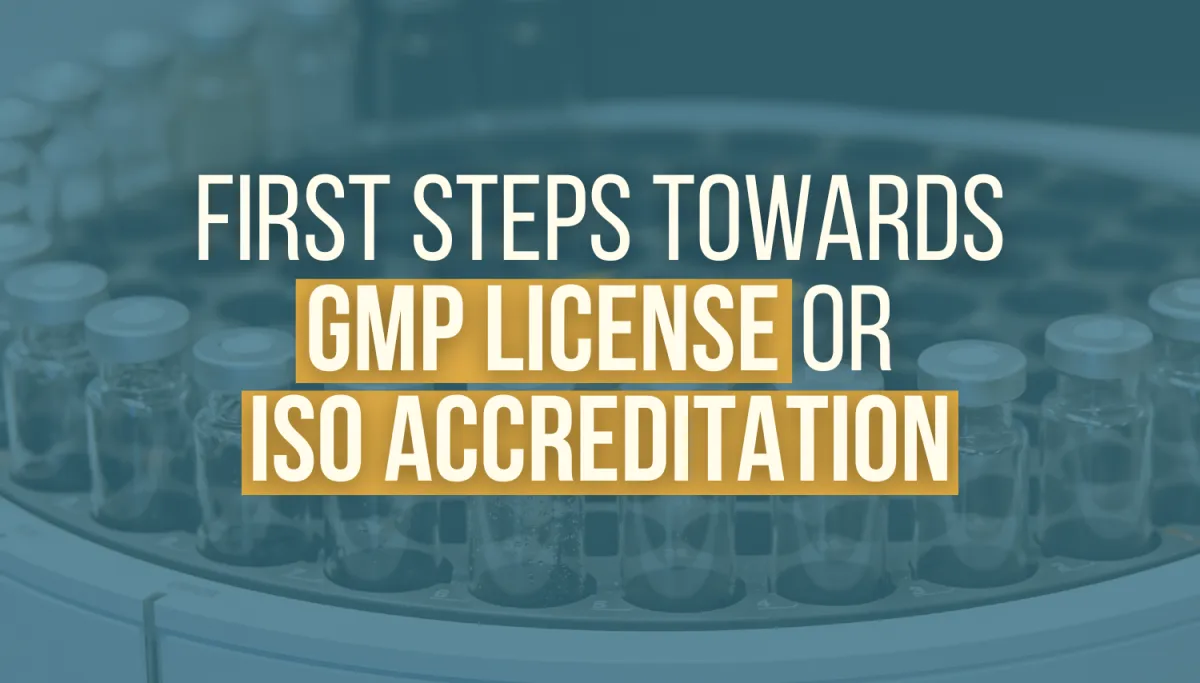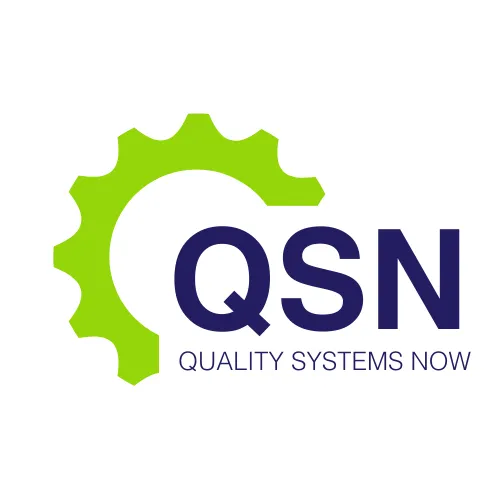LATEST NEWS

First Steps towards GMP License or ISO Accreditation
Introduction
For companies operating in regulated industries such as pharmaceuticals, medical devices, biotechnology, and testing laboratories, achieving Good Manufacturing Practice (GMP) licensing or ISO accreditation is a milestone. These quality frameworks are not merely regulatory checkboxes—they are foundational systems that safeguard product quality, ensure patient and user safety, and enable access to national and global markets. However, the journey to obtaining a GMP license or ISO certification can be daunting, especially for start-ups, SMEs, or organisations expanding into regulated domains for the first time. At Quality Systems Now we present a scientific and systematic overview of the initial steps required to begin the journey toward GMP or ISO compliance, with a focus on regulatory preparedness, system development, risk-based thinking, and continual improvement.
Understanding the Regulatory Landscape
Before embarking on the path toward certification or licensing, it is crucial to understand the applicable regulatory framework for your industry. Each industry sector has its own regulatory authority and applicable standards:
Pharmaceuticals must comply with Good Manufacturing Practice (GMP) requirements as defined by authorities such as the TGA (Therapeutic Goods Administration), FDA (Food and Drug Administration), or EMA (European Medicines Agency).
Medical devices are governed by standards such as ISO 13485 for quality management systems and ISO 14971 for risk management.
Testing and calibration laboratories are assessed against ISO/IEC 17025, which ensures technical competence and the ability to produce valid results.
General quality systems across STEM-related enterprises may fall under ISO 9001, the internationally recognised standard for Quality Management Systems (QMS).
Each of these standards requires a tailored approach, but all share common foundations in quality management principles, including leadership commitment, customer focus, risk-based thinking, and a process approach.
Initial Gap Analysis and Readiness Assessment
The first actionable step is to conduct a Gap Analysis. This assessment compares your current operations against the requirements of the relevant standard or GMP guidelines. The output is a detailed list of deficiencies and improvement areas that must be addressed before submitting an application for licensing or certification.
Quality Systems Now offers professional Gap Analyses tailored to your industry, whether you are seeking GMP licensing for a pharmaceutical facility or ISO 13485 accreditation for a medical device start-up. With over 25 years of industry experience, we provide sector-specific insight into the regulatory expectations and practical solutions to bridge any gaps.
Building a Quality Management System (QMS)
A well-designed QMS forms the structural backbone for both ISO certification and GMP compliance. The system must be documented, implemented, maintained, and continually improved. Essential elements of a QMS include:
Quality Manual that outlines the organisation’s commitment to quality and compliance.
Standard Operating Procedures (SOPs) that govern every operational process—from document control to customer complaints.
Records and Forms to demonstrate that procedures are followed and outputs are monitored.
Quality Objectives and KPIs that align with regulatory and business goals.
Internal Audit Program to ensure ongoing system conformance and performance.
For example, a pharmaceutical compounding business pursuing GMP licensing must demonstrate not only the presence of these QMS elements but also their consistent application to support batch traceability, product release, and deviation management.
Quality Systems Now helps organisations create and implement robust QMS frameworks customised to the relevant regulatory requirements—whether under ISO 17025 for a testing lab or GMP for a sterile manufacturing facility.
Risk Management and Product Safety
A critical requirement across all quality frameworks is the incorporation of risk-based thinking. In medical device manufacturing, ISO 14971 specifically requires a systematic approach to identify, evaluate, and control risks throughout the product lifecycle. Similarly, GMP principles embed risk assessments into the design and control of manufacturing processes to prevent product contamination, mix-ups, and deviations.
Implementing a risk management program requires a methodical approach:
Hazard Identification – recognising potential risks to product quality or safety.
Risk Analysis – assessing the likelihood and impact of each risk.
Risk Control Measures – determining preventive or corrective actions.
Review and Communication – ensuring risk information is updated and shared appropriately.
With expertise across pharmaceuticals, medtech, and R&D, Quality Systems Now supports clients in integrating practical risk management strategies directly into operational processes—laying a strong foundation for both compliance and patient safety.
Facility Design and Equipment Qualification
In GMP-regulated environments, facility design and equipment qualification play pivotal roles in demonstrating that a site is suitable for manufacturing high-quality, safe products. Regulatory authorities will assess the cleanliness, layout, HVAC systems, and segregation of operations, especially for products with a high contamination risk.
Design qualification (DQ) ensures the facility and equipment meet user requirements and regulatory expectations.
Installation qualification (IQ) verifies that systems are installed according to specifications.
Operational qualification (OQ) confirms that equipment functions correctly.
Performance qualification (PQ) proves consistent performance under normal operating conditions.
ISO-accredited laboratories must also ensure their equipment is calibrated and traceable to national standards, supported by evidence of technical validation.
Quality Systems Now brings deep knowledge of facility compliance and equipment qualification. Whether you are building a new biotech laboratory or upgrading an existing GMP facility, our team ensures compliance is designed into your infrastructure from day one.
Training and Competency
Human error remains one of the most frequent causes of non-conformance. For this reason, staff training and demonstrated competency are fundamental to any licensing or accreditation effort.
Training programs must be:
Role-specific and tailored to the responsibilities of each employee.
Documented with records of attendance, content, and evaluations.
Continually reviewed to incorporate changes in regulatory requirements, procedures, or product types.
Quality Systems Now offers structured training modules across GMP, ISO 13485, ISO 17025, and ISO 9001 systems, with a strong focus on practical application and regulatory expectations.
Internal Audits and Management Review
Before applying for certification or licensing, organisations must demonstrate that their systems have been tested internally. This is done through internal audits and management reviews:
Internal audits assess whether procedures are being followed and whether the QMS is effective.
Management reviews evaluate the QMS as a whole, using data from audits, customer feedback, quality metrics, and non-conformances.
These activities show regulators and certifying bodies that the organisation is committed to continuous improvement and regulatory compliance.
Application Submission and Pre-Audit Preparation
Once systems are in place, the organisation can proceed with the formal application to the relevant authority or certification body. Preparation for external audits includes:
Document control – ensuring all documents are current and properly authorised.
Audit readiness checks – simulating the audit experience to identify gaps.
Staff preparation – training personnel on how to respond to auditor questions.
Quality Systems Now provides pre-audit support services to ensure your team is fully prepared for the assessment process, greatly increasing the likelihood of first-time success.
Let's have a chat about it >>
Achieving GMP licensing or ISO accreditation requires a deliberate and systematic approach, grounded in quality science, risk management, and operational excellence. From initial readiness assessments to full system implementation and audit readiness, each step must be meticulously planned and executed. With over 25 years of cross-sector experience, Quality Systems Now offers expert guidance and hands-on support to help your business succeed—whether you’re manufacturing pharmaceuticals, designing medical devices, testing in ISO 17025 labs, or building a compliant ISO 9001 system for a STEM enterprise.
To begin your journey with confidence, partner with Quality Systems Now—where quality is not just a goal, but a system for success.
